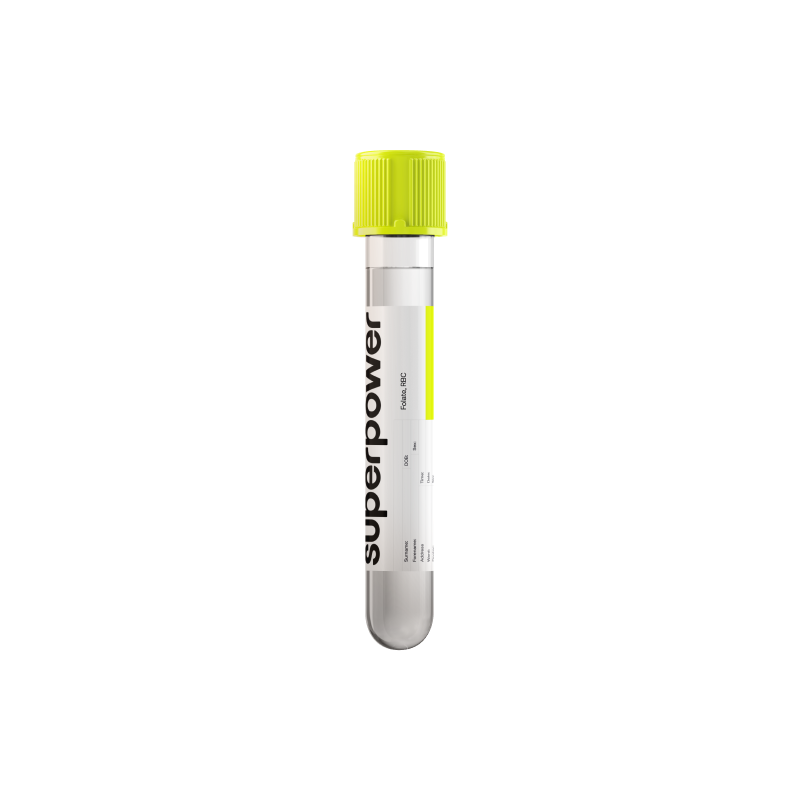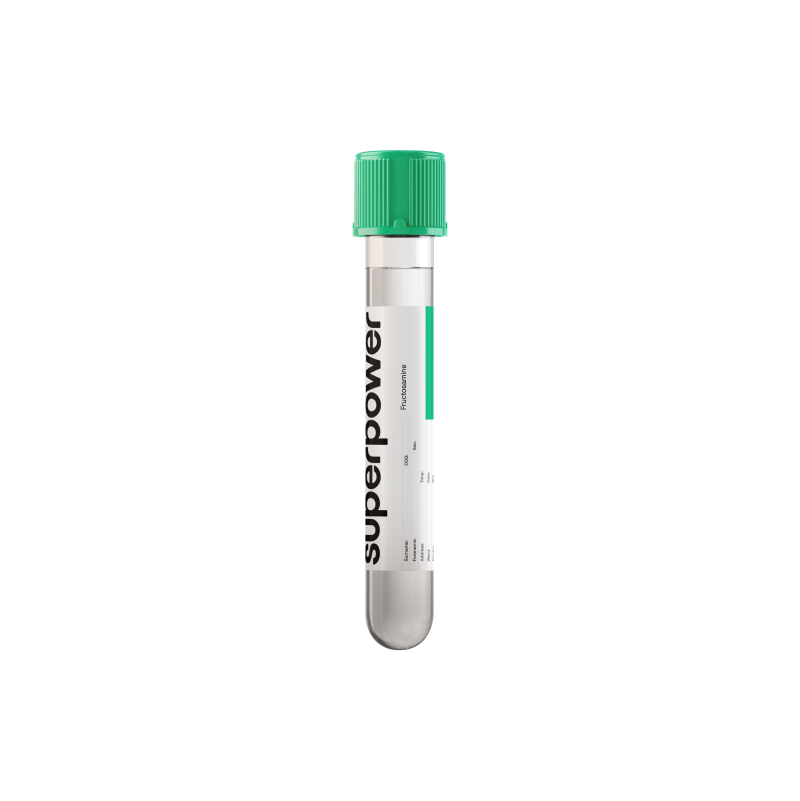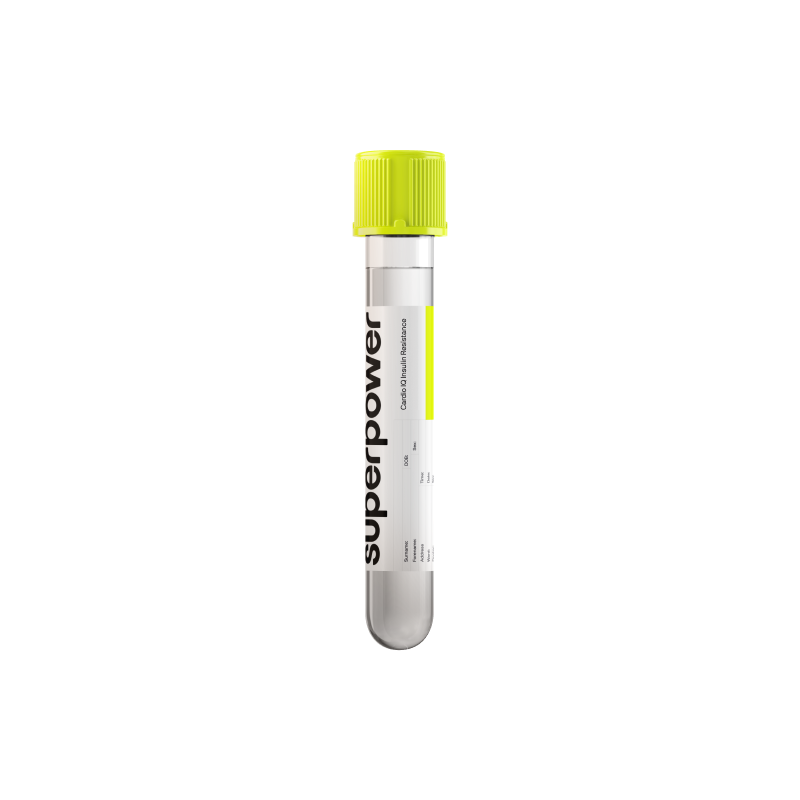Know how your growth hormone system is working day to day.
IGF-1 is a steady marker of anabolic capacity, muscle repair, bone strength, and healthy aging—giving you a clear, trackable signal that ties training, nutrition, and recovery together.
Key Benefits
Check your growth hormone activity over time using a stable IGF-1 marker.
- Spot growth hormone excess (acromegaly) by detecting persistently elevated IGF-1.
- Flag possible growth hormone deficiency when IGF-1 is low with compatible symptoms.
- Clarify poor childhood growth by assessing the GH–IGF axis.
- Guide acromegaly treatment by titrating medications to normalize IGF-1.
- Track growth hormone replacement response and help adjust dosing over time.
- Explain IGF-1 shifts from nutrition, liver, thyroid, kidney, or uncontrolled diabetes.
- Best interpreted with age- and sex-specific ranges and GH suppression/stimulation tests.
What is Insulin-Like Growth Factor 1 (IGF-1)?
Insulin‑Like Growth Factor 1 is a growth‑promoting hormone made mostly by the liver after stimulation by pituitary growth hormone (peptide hormone; hepatic production; GH). Many tissues also make smaller amounts for local action (paracrine/autocrine). In blood, IGF‑1 circulates largely bound to carrier proteins that regulate its delivery and lifespan (IGF‑binding proteins, especially IGFBP‑3 with the acid‑labile subunit). Because growth hormone is released in short bursts, IGF‑1 provides a steadier readout of activity in the body’s growth system (somatotropic axis).
IGF‑1’s main job is to drive growth and maintenance of bones, muscles, and organs. It activates cell growth and repair pathways by binding its specific surface receptor (IGF‑1 receptor, a receptor tyrosine kinase), promoting protein building, bone lengthening at growth plates, and tissue recovery after stress. In childhood it enables height gain; in adulthood it helps preserve muscle, bone strength, and metabolic balance. In short, IGF‑1 reflects how robustly the growth‑hormone system is operating and helps coordinate the body’s anabolic processes (anabolic signaling).
Why is Insulin-Like Growth Factor 1 (IGF-1) important?
Insulin-Like Growth Factor 1 (IGF-1) is the body’s downstream signal for growth hormone. Made mainly by the liver, it carries the “grow and repair” message to muscle, bone, cartilage, nerves, and the heart, while also shaping how we use glucose and fat. Because it reflects average growth hormone activity, IGF-1 is a window into whole-body anabolism, recovery, and metabolic balance.
Reference ranges vary widely by age and sex—highest in puberty, lower in later life. Within age-adjusted ranges, values in the middle generally indicate balanced growth hormone signaling and adequate nutrition; puberty and pregnancy can shift the normal “middle” upward.
When IGF-1 runs low, it often means insufficient growth hormone action or limited substrate to make it: pituitary disease, liver dysfunction, chronic inflammation, or undernutrition. People may notice fatigue, reduced muscle and strength, increased fat, low exercise capacity, thinning bones and fractures, dry skin, low mood, and low libido. Children grow slowly and fall off height curves; teens may have delayed puberty. In older adults, low levels correlate with sarcopenia and frailty.
High IGF-1 usually signals excess growth hormone, most often from a pituitary adenoma. Features include enlarging hands/feet, jaw or facial changes, headaches, carpal tunnel, sweating, sleep apnea, high blood pressure, and insulin resistance; children shoot up in height. Epidemiologically, higher IGF-1 associates with increased risk of some cancers.
Big picture: IGF-1 links the pituitary–liver axis with nutrition, insulin, thyroid status, and inflammation. Persistently low or high levels relate to adverse body composition, bone health, cardiometabolic risk, and, in studies, mortality—making IGF-1 a central marker of growth signaling and long-term health.
What Insights Will I Get?
Insulin-Like Growth Factor 1 (IGF-1) reflects your body’s growth hormone activity over time. Made mostly by the liver in response to growth hormone, it signals how well you’re building and repairing tissues. IGF-1 supports muscle and bone formation, vascular and nerve health, glucose and lipid handling, reproductive function, and immune repair—an index of anabolic tone and whole-system resilience.
Low values usually reflect reduced growth hormone signaling or production capacity. Common drivers include energy deficit or malnutrition, chronic illness or inflammation, liver disease, too little thyroid hormone (hypothyroxinemia), and age-related decline. In diabetes with poor control, hepatic growth hormone resistance can lower IGF-1. System effects tend to include lower muscle and bone turnover, reduced exercise capacity, slower wound healing, and in children, impaired linear growth. Oral estrogens often lower IGF-1; pregnancy typically raises it.
Being in range suggests an effective GH–IGF axis, with adequate protein synthesis, bone remodeling, and balanced insulin sensitivity. It generally indicates metabolic stability and capacity for recovery from stressors. There is no firm consensus on an exact “optimal” spot within normal; mid–age-adjusted range is commonly viewed as balanced.
High values usually reflect increased growth hormone drive or altered binding proteins. Typical causes include acromegaly (pituitary overproduction), puberty, pregnancy (placental GH), and androgen exposure. System effects can include soft-tissue growth, headaches, carpal tunnel, edema, elevated blood pressure, cardiac strain, and shifts in glucose and lipid flux. Epidemiology links higher IGF-1 with increased risk of certain cancers.
Notes: IGF-1 is relatively stable across the day; interpret with age- and sex-specific ranges or Z-scores. Acute illness, fasting or caloric restriction, thyroid status, liver/kidney disease, diabetes control, and medications (growth hormone, oral estrogens) can shift values. Assays differ; follow trends using the same method.

.png)

.svg)



.png)
.png)
.png)
.png)








